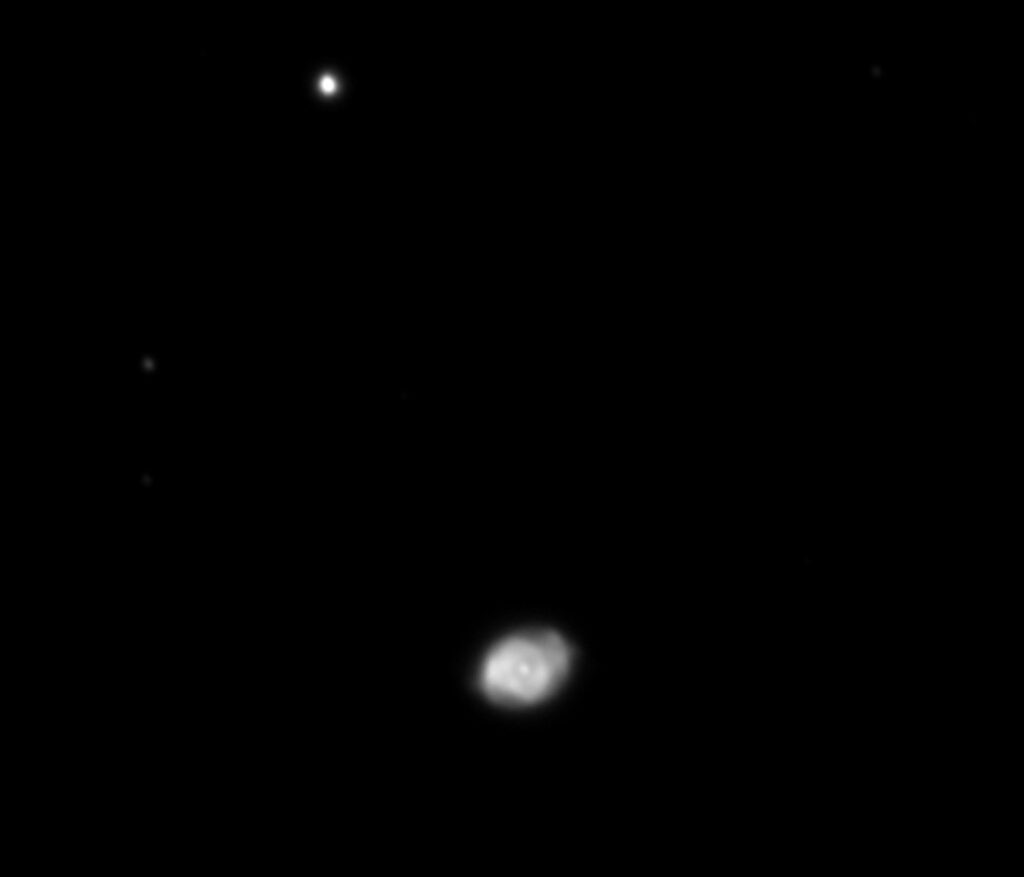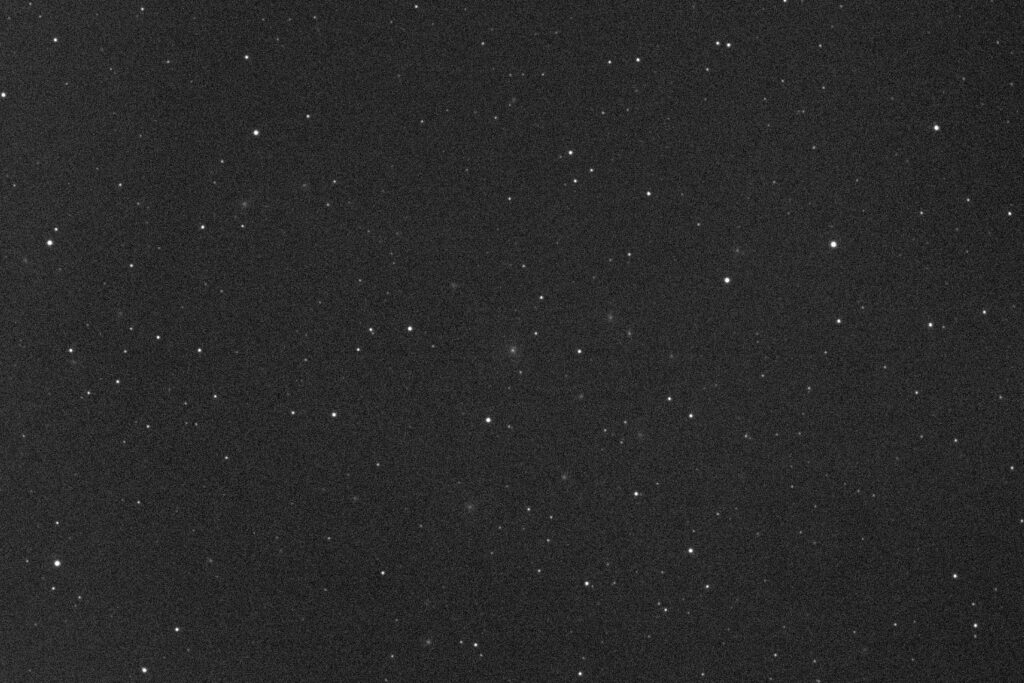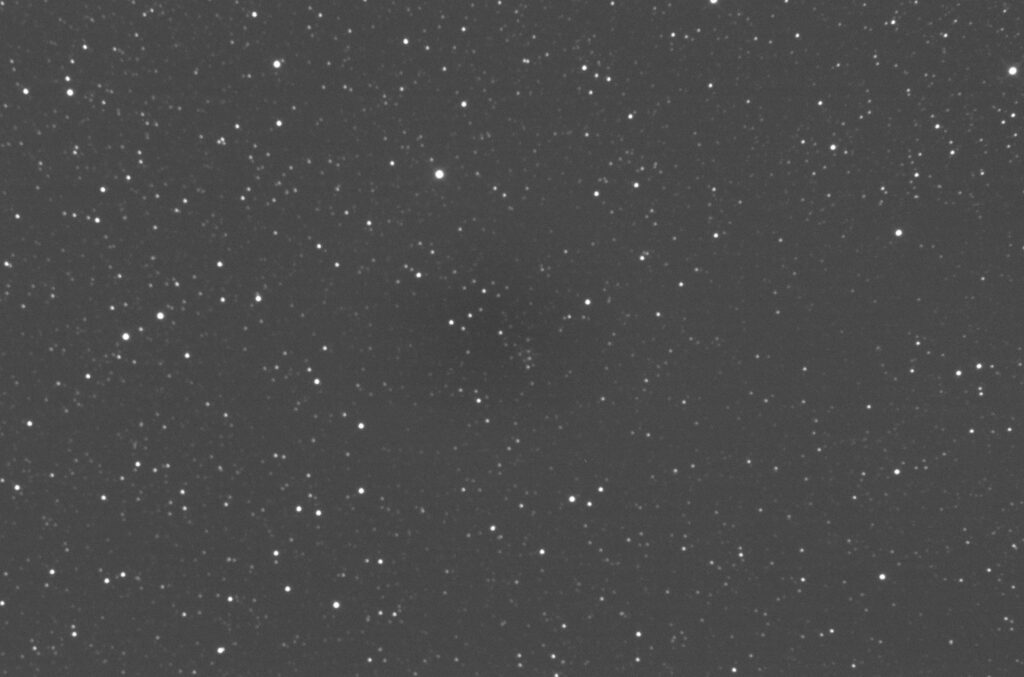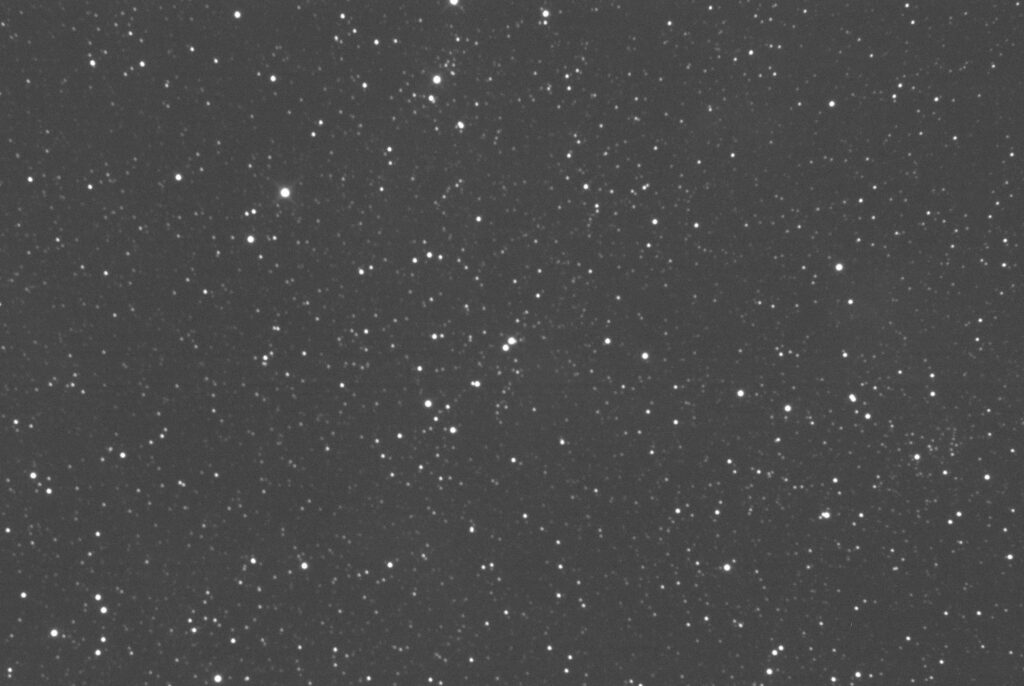Session Data
- Date: 02/09/2023
- Time: 21:20 – 01:53 UT
- Seeing: II. Good – Slight
- Transparency: III. Clear with slight haze
- Temp: 14.9C,
- Air Pressure: 1026mb,
- Humidity: 94%,
- Dew Point: 13.9C,
- Wind Speed: 1mph
- SQM: 18.77
Scope: Altair 250mm RC f/5.3 Camera: ZWO ASI 183MM Pro, Baader 35nm Ha, Dark subtracted and Flat fielded.
Session Notes:
Trying for a night of purely EAA.
I realised after the first observation that I had left in the Ha filter from the previous outing. I left everything in place so the flats I would be taking worked across all the images.
Conditions deteriorated around midnight, but improved a lot at around 01:30 UT. Packed up at 01:45 UT
NGC6543, Caldwell 6

I’m observing this as Caldwell 6. West is to the 9 o’clock. Camera rotation 266.
This is really small need to enlarge it to 150% in order to make out the detail. I can see what looks like a central star.
Outside of that is the inner shell rotated towards the NW. From that are what look like two spiral arms that make it look like it’s rotating in a clockwise direction.
On subsequent reading of James O’Meara’s book ‘The Caldwell Objects’ he describes what is a brighter patch on what I described as one of the spiral arms, For some time this was believed to be a separate background galaxy IC4677, but it is now recognised that his is part of material ejected in previous outbursts. There was no sign of this at all.
I’m not sure how they came up with a diameter of 6 arc/min for this object. Even SJM only sees about 1 arc/min and with a camera I’m not seeing much larger than that after 10 mins worth of stacking
NGC1275, Caldwell 24

I’m observing this as Caldwell 24.
West is to the 3 o’clock and the frame is rotated at 88 degrees.
This so reminds me of the Virgo cluster. After 14 x 60sec of stacking I can make out 12 galaxies of this cluster group, which is also known as Abell 426. Caldwell 24 at this stage looks to be the brightest.
Transparency throughout the stack is deteriorating to the point where all I can see is the galaxy core and perhaps a little of the galactic halo.
Stopped the stack and have taken tonight’s batch of flats.
Luna2 100 L6, Crater Tycho
Tycho really stands out against the lighter surface. You can clearly see three ejecta rays equally spaced in a 120 degree radial pattern. At about 4 o’clock to Tycho is a whitish patch that is centred between the craters Lexel and Walther G. The mist has really rolled in now at 23:25 UT
Not quite sure why I didn’t take a screenshot of this.
NGC6846, Collinder 410

I’m observing this as Collinder 410
Camera rotation 266 degrees.
This thing is tiny. North is to the 9 o’clock. After 1 x 60 sec sub it is difficult to say that what was at the centre of the frame looked any different to any other clump of stars in the image. However let things run for 19 frames and you see a definite shape. There are ten 15th mag stars that form a long 50 arc/sec triangle shape pointing to the SE. If you look at an annotated platesolved image, the whole frame is stuffed full of invisible PGC galaxies.
NGC6883, Collinder 415

I’m observing this as Collinder 415.
North is to the 9 o’clock at 272 degrees.
Two 9.3 and 9.8 mag stars are at the centre of the frame. However just to the NW of these there are a number of curved lines of stars – maybe no more that 10 or so in each group. Iif you look for long enough you end up staring at a three leaved clover. The most prominent stars in the frame form like a squashed N shape running S from the frame centre. These are all around 10th mag.
All in all, this was a really interesting way of observing.